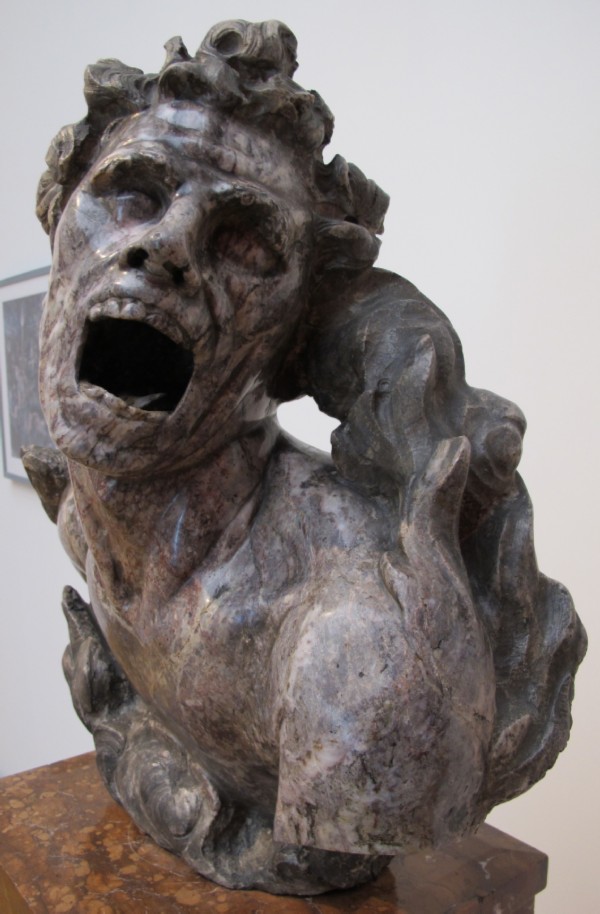Balthasar Permoser – German sculptor

Balthasar Permoser – the son of a simple Bavarian peasant, who became the court sculptor of the Elector of Saxony
Balthasar Permoser (August 13, 1651 – February 20, 1732) was a famous German sculptor of the 17th-18th centuries, a prominent representative of the Late Baroque era in the history of European art. He was a very prolific craftsman; several hundred masterpieces of his work, made from a variety of materials, have survived to this day.
Balthasar Permoser is rightfully considered one of the founders of the South German style of sculptural art. For more than forty years, he led a huge workshop in which dozens of assistants constantly worked on the creation of statues and reliefs.

Biography
Balthazar Permoser was born on August 13, 1651 into an ordinary peasant family in the village of Kammer. From early childhood, he helped his parents with housework and herded sheep. In his free time, he carved all kinds of figures with a knife from wood. The talented boy was spotted by a local artist who taught him the basics of drawing for free.
As a teenager, Balthazar left for Salzburg and got a job as an assistant in the workshop of the sculptor Wolf Weissenkirchner. In 1670, Permoser moved to Vienna, where, under the guidance of Tobias Cracker, he started making decorative figurines for wealthy citizens.

In 1675, the young artist went to Italy and lived in this country for fifteen years. Through Venice and Rome, he reached Florence, where he met Giovanni Battista Foggini. They became friends and began to work together to fulfill various orders for the local ruler, the Duke of Medici.
In 1689, the ruler of Saxony, Johann George III, visited Florence, who was greatly impressed by the sculptural richness of this city. Permoser did not miss the opportunity to introduce himself to the powerful elector and demonstrate his skillful work. Struck by the skill of his fellow countryman, the prince without hesitation offered Balthazar the position of court sculptor.

In August 1690, Permoser arrived in Dresden and stayed forever in the capital of Saxony.
A year later, Johann George II died of the plague. But August the Strong, who ascended the throne of the principality, turned out to be the same passionate admirer of the artist’s work as his father. He dreamed of turning Dresden into one of the most beautiful cities in Europe.
With the funds allocated by the ruler, Balthazar Permoser set up a huge workshop, hired assistants and began to implement all kinds of art projects. The sculptor worked for the elector for over 40 years until his death.

With the permission of his patron, Permoser sometimes left Dresden and, at the invitation of influential nobles, visited different cities of Europe to carry out private orders.
The ingenious sculptor created masterpieces of various sizes from marble, sandstone, wood, ivory, baked clay, plaster and silver. Hundreds of students passed through his Dresden workshop.
At the beginning of the 18th century, the artist gained pan-European fame as a brilliant master and worked on the creation of unique sculptures until old age. Balthasar Permoser died on February 20, 1732 at the age of 80 in Dresden, where his remains lie today.

The most famous works of Balthasar Permoser
The great German sculptor presented mankind with many beautiful masterpieces of fine art. And yet the most famous works of Balthasar Permoser are:
- “Marsyas” (1680) – a bust of the hero of ancient Greek myths, who was brutally killed by Apollo for winning the match. The face of the character, distraught from severe pain, is distorted by a terrible grimace.
- The sculptural decoration of the Dresden Zwinger (1710-1728) is the greatest masterpiece of the master, on which he and his assistants worked for 18 years. In total, they created almost 130 sandstone statues to decorate the luxurious palace and garden.
- “The Apotheosis of Prince Eugene” (1718-1721) is a sculptural composition glorifying the feat of the commander who saved Europe from the invasion of the Turks in 1697. The artist depicted the prince with the attributes of the mythical hero Hercules, surrounded by the defeated Janissaries.
- The tombstone on the grave of Balthazar Permoser (1732) is the last masterpiece of the master, created by him a month before his death. The sculptural composition consists of five individual characters: Jesus crucified on the cross, St. Joseph, John the Evangelist, Mary Magdalene and the Mother of God.









